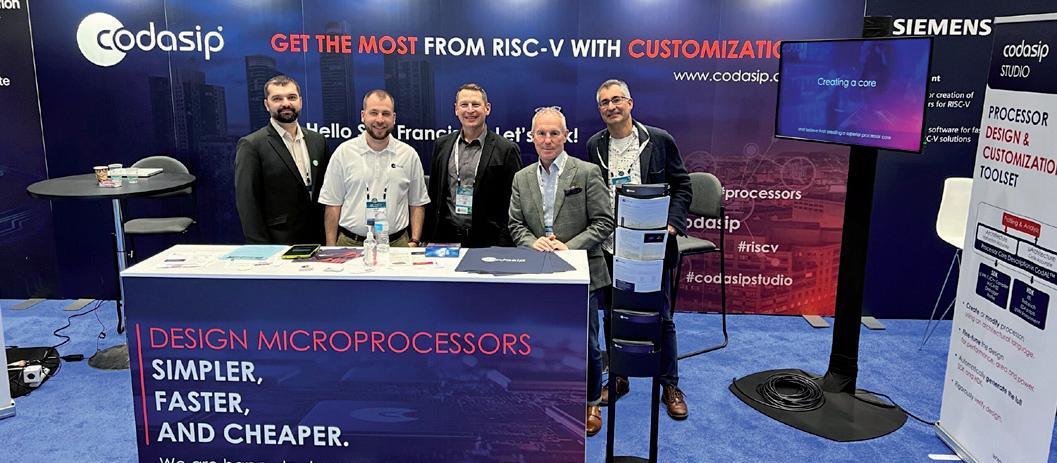2 minute read
Peac performance
from HiPEACinfo 65
by HiPEAC
Next Article
Accelerators for deep learning are proliferating, but as their complexity grows it is getting harder to accurately model them in design-space exploration. To solve this, Francisco Muñoz-Martinez, Manuel E. Acacio (both University of Murcia), José L. Abellán (Catholic University of Murcia) and Tushar Krishna (Georgia Institute of Technology) teamed up to create a cycle-level simulation tool.
STONNE: A cycle-level microarchitectural simulation framework
The design of specialized architectures for accelerating the inference phase of deep learning (DL) is currently a flourishing area of research. While first-generation systolic-based accelerator proposals used simple fixed dataflows tailored for dense deep neural network (DNNs) applications, more recent architectures such as MAERI or SIGMA make the case for flexibility to efficiently support a wide variety of layer types, dimensions, and sparsity. (See ‘Further information’, below, for more details on these architectures).
As the complexity of these accelerators grows, the analytical models currently being used for design-space exploration are unable to capture execution-time subtleties, leading to inexact results in many cases. As was the case in other well-established research areas, such as central processing unit (CPU) and graphic processing unit (GPU) design, this creates the need for cyclelevel simulation tools to allow for fast and accurate design-space exploration of DL accelerators, and rapid quantification of the efficacy of architectural enhancements during the early stages of a design.
To this end, researchers Francisco Muñoz-Martinez and Manuel E. Acacio from the University of Murcia, José L. Abellán from the Catholic University of Murcia and Tushar Krishna from the Georgia Institute of Technology joined forces to develop STONNE, a cycle-level microarchitectural simulation framework that can plug into any high-level DL framework like PyTorch as an accelerator device and perform full-model evaluation of stateof-the-art systolic and flexible DNN accelerators, both with and without sparsity support. In this way, STONNE can fully simulate real DNN models like Resnets-50, ssd-Mobilenets and BERT from different domains such as computer vision, object segmentation and natural-language processing on state-of-the-art accelerators.
To allow the simulation of different accelerators, STONNE builds on the observation that most current DL accelerator architectures can be logically organized as three configurable network fabrics: distribution network, multiplier network, and reduction networks. This design provides an easily expandable and configurable set of microarchitecture modules that, conveniently selected and combined, can model both systolic and flexible DL accelerators such as the tensor processing unit (TPU), MAERI or SIGMA.
The simulator was published at the prestigious 2021 IEEE International Symposium on Workload Characterization (IISWC21) and is fully available under the terms of the MIT License. Currently, the simulator is gaining attention by the research community and is already being used by a large number of institutions worldwide.
FURTHER INFORMATION:
Access STONNE via github github.com/stonne-simulator/stonne.
Eric Qin et al. SIGMA: ‘A Sparse and Irregular GEMM Accelerator with Flexible Interconnects for DNN Training’ 2020 IEEE International Symposium on High Performance Computer Architecture (HPCA) ieeexplore.ieee.org/document/9065523
Hyoukjun Kwon et al. ‘MAERI: Enabling Flexible Dataflow Mapping over DNN Accelerators via Reconfigurable Interconnects’ ACM SIGPLAN Notices, Volume 53, Issue 2, February 2018 pp 461-475 dl.acm.org/doi/10.1145/3296957.3173176

